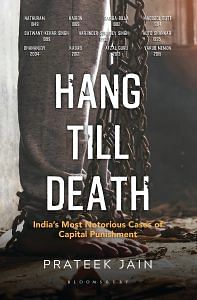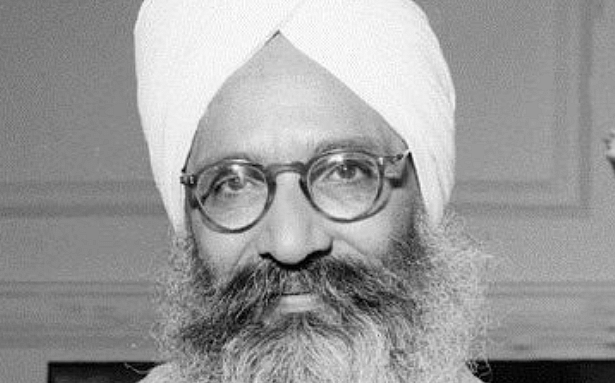Nihal Singh Kairon was a social reformer and a pioneer who was the first person in the province of Punjab to raise awareness for the education of women. He set up a girls’ school in Patti and encouraged parents to send their daughters to school. He was a well-known and highly respected man in Amritsar.
On 1 October 1901, the Dhillon family was blessed with the birth of a beautiful and healthy baby boy. They named him Partap Singh. His father, Nihal Singh, laid great emphasis on education and Partap was brought up on the same principles. After successfully completing his schooling in Amritsar, he went to Khalsa College in the city to pursue graduation. Nihal Singh was proud of his son and wanted him to achieve new heights and gain an education which could not be provided in British India. He thus decided to send him to the United States for higher studies.
Partap Singh took admission at the University of Michigan. Survival as a student in the US was difficult without adequate money, and the young man had to work hard to supplement his stipend. He started working in farms and factories while continuing with his postgraduate studies. Soon he passed out from the University of Michigan with a master’s degree in political science. However, on completion of his degree, he did not immediately go back to India. He was impressed with the farming techniques the Americans deployed and was keen to learn it all, hoping to replicate those back home. He ended up spending ten more years studying farming methods, working on farms for 12 to 14 hours a day. When he was convinced that he had finally learnt it all, he decided to return to India.
***
POST INDEPENDENCE
At the time of independence, Partap Singh Kairon held offices in various state governments. He played different constructive roles over the years. Initially, he was elected as the rehabilitation minister and development minister between 1947 and 1949. The Partition had displaced over 14 million people along religious lines, creating a situation of overwhelming refugee crisis; there were large-scale violence, migration and chaos, with estimates of loss of life, accompanying or preceding the Partition, varying between several hundred thousand and two million. This was an extremely challenging situation and as the rehabilitation minister, he had to settle millions of refugees who had migrated from West Punjab amidst tremendous confusion. Kairon is credited with reestablishing millions in East Punjab not only with new homes but also with job opportunities. In a very short period of time, he provided stability for them in new professions to support themselves and their families.
In 1952, Kairon was at the peak of his political career, with being the rehabilitation minister and development minister between 1947 and 1949, and the chief minister of Punjab from 21 January 1956 to 23 June 1964. Even after seeing success and achieving political power, he never forgot his roots.
Kairon brought in prosperity for Punjab by preparing the ground for the Green Revolution and the growth of industries. He invited industrialists, such as the Oswals and the Jaijees, to invest in the state. Like his father Nihal Singh, Kairon firmly believed in the importance of education. He made primary- and middle-school education compulsory and free. He boosted higher education with the setting up of Punjab Agricultural University, Kurukshetra University and Postgraduate Institute of Medical Education and Research. He consolidated landholdings in undivided Punjab by pooling fragments of land into economically viable chunks—the only Indian state to do so—thus preparing farms for mechanisation. The law that was passed for this helped farmers in not only improving their produce but also bringing them relief from confrontations with each other. A villager by conviction and an American by education, Kairon was always looking for opportunities to help the farmers of his state.
Partap Singh Kairon was considered one of the most progressive chief minister of the state. According to M Rajiv Lochan, Panjab University, Chandigarh, Partap Singh succeeded in restoring communal harmony, opposing both the Punjabi Suba Movement and the language movement.5 With the introduction of innovation, Punjab was placed on the industrial map of India. Further, The Partition had also cost the state its original capital—Lahore. It now needed a new capital. Renowned American planner and architect Albert Mayer was tasked to design a new city called Chandigarh in 1949. Kairon, during the years of his chief ministership, helped in the creation of Chandigarh, which was completed in 1960. He also helped in establishing the industrial township of Faridabad, now the largest city in the state of Haryana and a major industrial hub.
Punjab became the first state in India to have electricity in all its villages. The state’s basic requirement of infrastructure in terms of irrigation, electrification and roads were fulfilled. Everything was going well until a disaster struck.
Also read: How Tihar jailers protected Sikh inmates after Indira Gandhi’s assassination
THE REIGN ENDS
The first blow was dealt in 1964, during his second term as the chief minister. Corruption charges were levelled against him. There were three probes, however, he was absolved of all three. A month after Prime Minister Jawaharlal Nehru’s death in May 1964, Kairon resigned after being charge sheeted by the Das Commission. It’s a measure of the high standards in public life those days that one of the charges Kairon, a severe diabetic, faced was of taking along a government doctor while travelling. Kairon was a man of vision, a man of strong likes and dislikes and the allegations were a serious blow to him; he thus resigned from his position as the chief minister of Punjab. Nobody knew at that time that he was not only resigning from his post but also from his life.
At the same time that a conspiracy was being hatched by three assassins with Sucha Singh as their ring leader. Their target was Partap Singh Kairon. Sucha Singh was convinced that Kairon had played a crucial role in the conviction of two culprits in a murder case, Ajit Singh and his father Bir Singh. They were in custody and under trial. When they were convicted Sucha Singh, probably closely connected to the convicts, believed that Kairon had taken a personal interest in securing the conviction of both the criminals.
On 6 February 1965, while on his way from Delhi to Chandigarh, he was waylaid near Rasoi village, Rohtak district. Sucha Singh and his friends Baldev Singh and Nahar Singh had been following them and seized the opportunity when it was presented to them. They took out their guns and started shooting at the car. Their target had been travelling with his personal assistant, an IAS officer and his driver. Partap Singh Kairon was assassinated on the spot along with his co-passengers.
Sucha Singh, Baldev Singh and Nahar Singh were hanged to death in 1969.
 This excerpt from Hang Till Death: India’s Most Notorious Cases of Capital Punishment by Prateek Jain has been published with permission from Bloomsbury India.
This excerpt from Hang Till Death: India’s Most Notorious Cases of Capital Punishment by Prateek Jain has been published with permission from Bloomsbury India.



